Housing statistics: quarterly update, December 2016
Statistical information on recent trends in housing.
New Build Housing - Social Sector
Social sector housing consists of local authority and housing association housing, and has accounted for just under a quarter (24%) of all new build homes completed over the 12 months to end June 2016. Social sector figures are collected a quarter ahead of those for the private sector meaning that figures are available up to the end of September 2016. However, to enable easier understanding of how each sector contributes to the all sector totals described previously, figures are also presented for the same time period to end June (although quarterly charts include the latest quarter's data).
The more up-to-date figures for the social sector are presented later in this section.
Chart 7a: Housing Association and Local Authority new build starts and completions, years to end June, 2006 to 2016
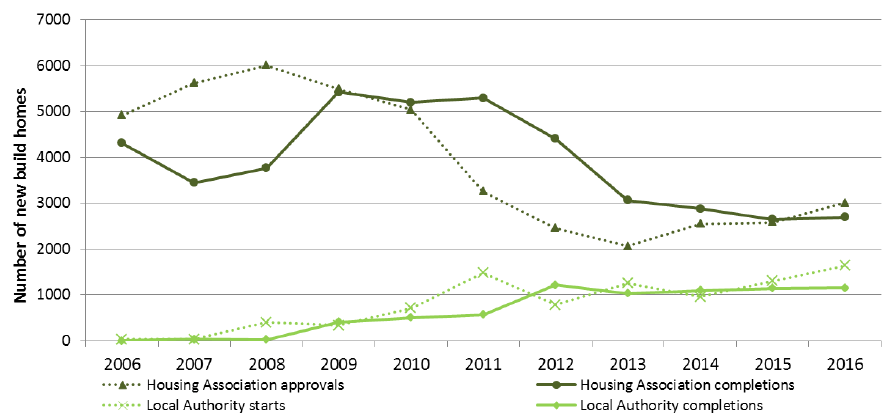
Chart 7b: Housing Association and Local Authority new build starts and completions, years to end September 2007 to 2016
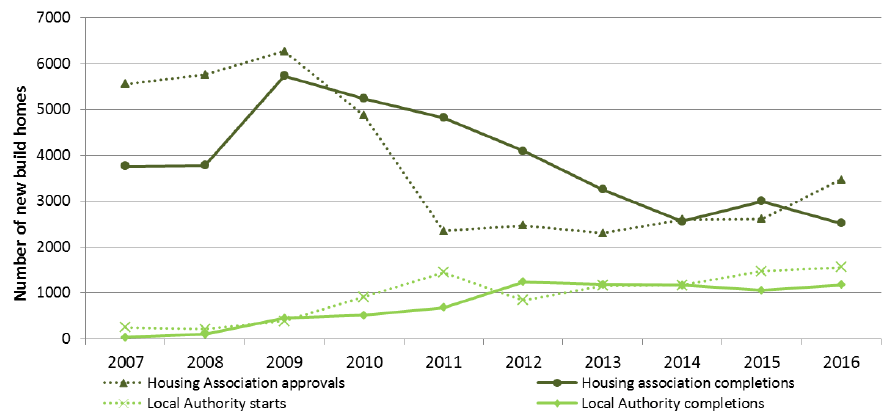
Chart 8: Quarterly new build approvals and completions (Housing Associations) since 2005
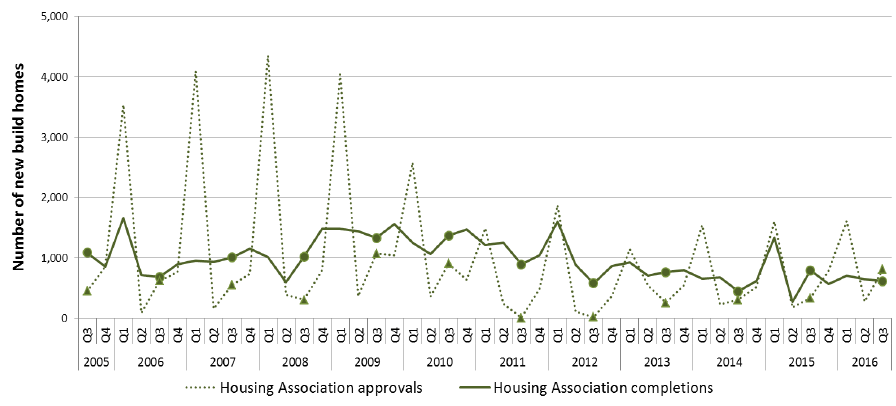
Chart 9: Quarterly new build starts and completions (Local Authority), since 2005
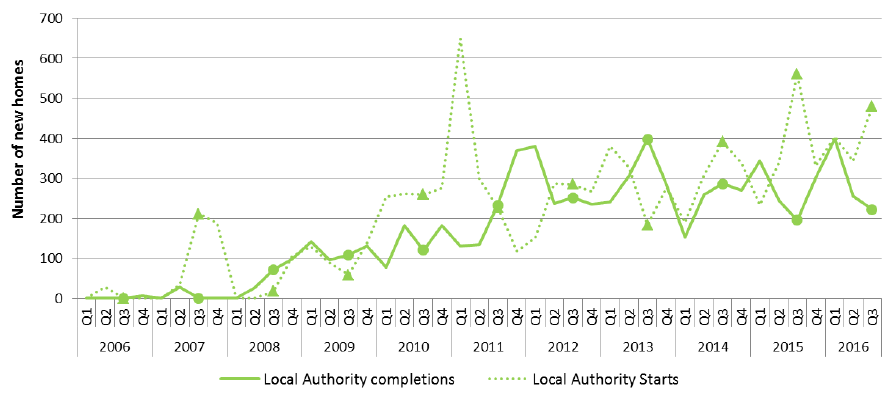
Trends over the last ten years
Chart 7a shows the number of local authority and housing association homes started and completed each year (to end June) since 2005, whilst Chart 7b shows the same information but up to end September (the most recent information available). Charts 8 and 9 show quarterly figures for housing associations and local authorities, respectively.
Social sector house building has not followed the same pattern as the private sector over time as the number of homes being built did not suddenly drop in 2008 following the recession.
Between 2006 and 2008 (years to end June) the number of housing association completions were around 3,400 to 4,300 each year before increasing to over 5,400 in 2009. Completions then decreased from 5,300 in 2011 to 2,650 in 2015, with a slight increase in the most recent year to almost 2,700.
The number of housing association approvals meanwhile increased from around 4,900 to 6,000 from 2006 to 2008 (years to end June), before falling to around 2,100 in 2013. The figures have since increased to around 3,000 in the year ending June 2016.
Very few local authority homes were built in 2006 and 2007 (years to end June). The number gradually increased from around 400 in the year ending June 2009 to over 1,200 in the year ending June 2012 and remained fairly steady since then. Local Authority housing has accounted for 7% of the total amount of new build homes completed across all sectors in the 12 months to end June 2016.
Trends to end June 2016
There were 895 social housing completions between April and June 2016; 77% more than the same quarter in 2015. This brings the total for the year to end June 2016 to 3,846. This is a 1% increase on the 3,792 social sector completions in the previous year.
Meanwhile, 620 social sector homes were started between April and June 2016; 20% higher than the same quarter in 2015. This brings the total for the year to end June 2016 to 4,640. This is a 19% increase on the 3,888 social sector starts in the previous year.
Sub-national figures for the year to end June 2016
Maps C and D show the rates of housing association and local authority new build completions in each local authority for the year to end June 2016. The housing stock of 6 local authorities (Argyll & Bute, Dumfries & Galloway, Glasgow, Inverclyde, Na h-Eileanan Siar and Scottish Borders) has been transferred to housing associations and so these areas do not build new local authority houses.
In the year to end June 2016 rates of housing association new build completions were highest in Glasgow City, Na h-Eileanan Siar, Shetland Islands and Inverclyde, whilst no new housing association houses were built in East Ayrshire and Moray.
Meanwhile local authority new build rates were highest in the Orkney Islands, Moray, South Ayrshire and East Ayrshire. As well as the 6 stock transfer authorities mentioned above, Aberdeen City, Dundee City, East Dunbartonshire, East Renfrewshire, Renfrewshire and the Shetland Islands built no new homes in the year ending June 2016.
Latest data to end September 2016
A total of 832 social sector homes were completed between July and September 2016, 16% fewer than the 985 homes completed in the same period in 2015. This brings the total for the 12 months to end September 2016 to 3,693, which is 9% fewer than the 4,052 completed in the previous year. The decrease in the 12 months to end September 2016 is mostly due to an decrease in Housing Association led completions, which decreased by 16%, whereas local authority led completions increased by 12%.
Meanwhile, 1,282 social sector homes were started between July and September 2016. This is up by 44% compared to the same quarter in the previous year. This brings the total for the 12 months to end September 2016 to 5,030 which is a 23% increase (941 homes) on the 4,089 starts in the previous year. The increase in the 12 months to end September 2016 is a result of Local Authority starts increasing by 84 homes and Housing Association approvals increasing by 857 homes (see Charts 8 and 9).
Map C: New build housing - housing association sector completions: rates per 10,000 population, year to end June 2016
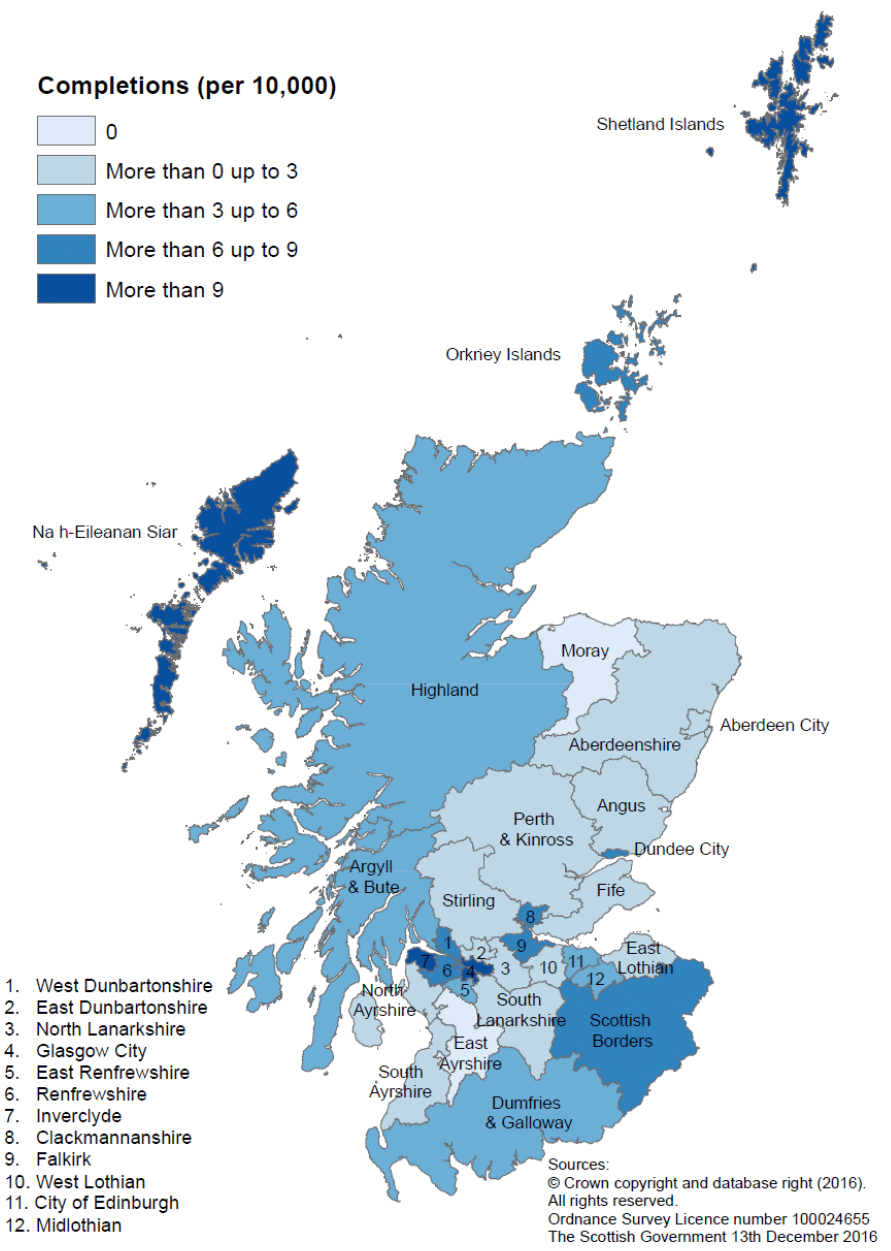
Map D: New build housing - local authority sector completions: rates per 10,000 population, year to end June 2016
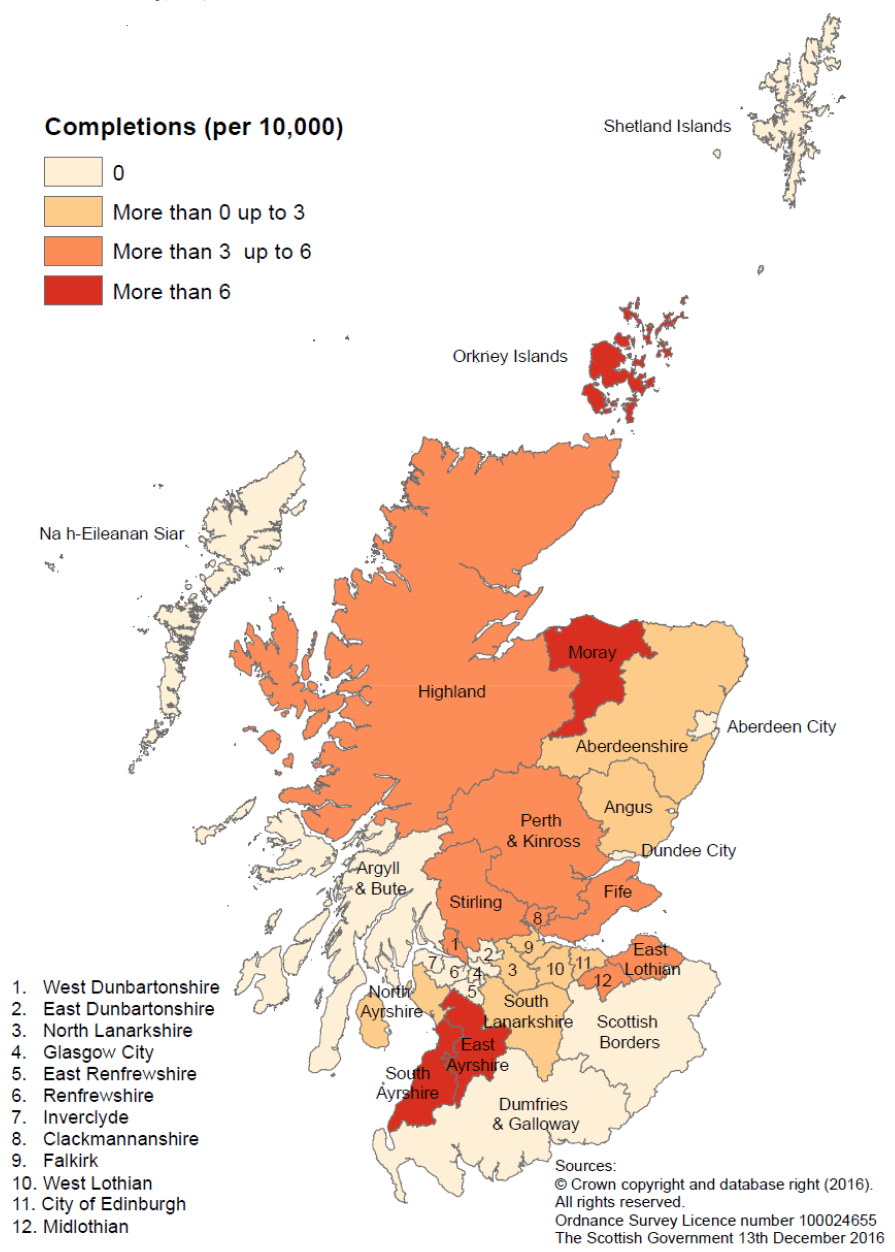
Contact
There is a problem
Thanks for your feedback